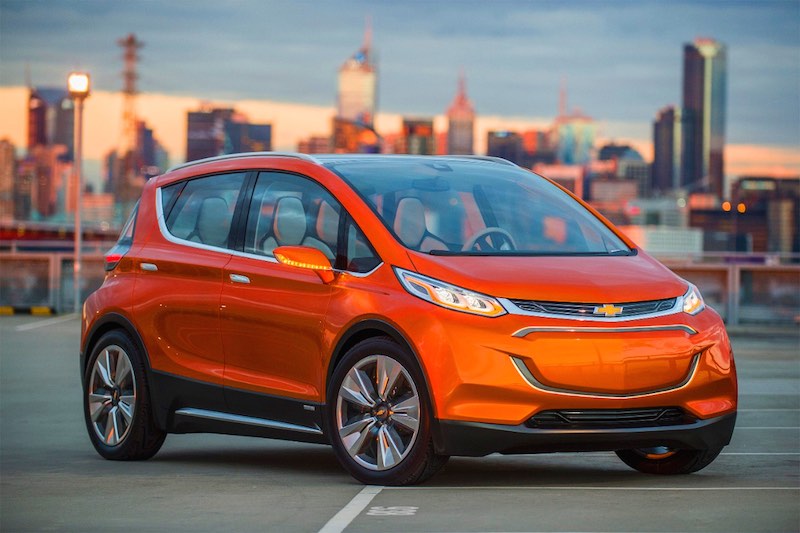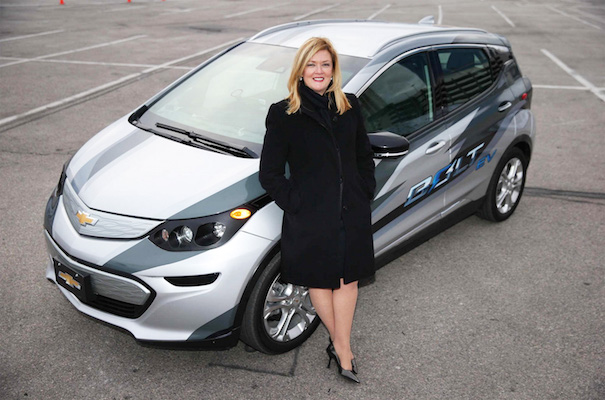GM turned heads at the 2016 CES (Consumer Electronics Show) with the launch of the groundbreaking 2017 Bolt electric vehicle, the first electric car with a long electric range (200 miles per charge, comparable to a Tesla Model S) but an affordable sticker price ($30,000). Inhabitat chatted with Pam Fletcher, the Executive Chief Engineer of Electric Vehicles over at GM to learn more about this accomplishment and what it took for one of the world’s largest car manufacturers to unveil such an innovative car. Read on for the interview.
INHABITAT: Congratulations on the launch of the Chevy Bolt! How long did it take to get to that point?
FLETCHER: The 2017 Chevrolet Bolt EV made its public debut yesterday after years of hard work. But one question that didn’t get a lot of attention in all the fanfare was: How did we get here? Many think our size is a disadvantage – that GM’s size is too big and not agile enough to develop a product like the Bolt EV. But without GM’s scale we would never have been able to build it and here’s why. It all starts with the people, and people is something GM has in abundance. The Bolt EV took more than 1,000 engineers and designers from around the globe to bring to life.
INHABITAT: How did you go about building the team to work on the Bolt?
FLETCHER: This team required a new focus that shattered tradition. We looked for certain attributes for the team to be successful; core values that allowed us to deliver to meet the needs of the business. We needed to bring together people who were not afraid to try new things. That’s why our team is populated with people who have a diverse set of experiences. We needed to bring on talent with a diverse background who were willing to enter unchartered waters and create something new; a team that could envision the possibilities along with the risks, yet identify a way around those risks. We needed fresh thinkers. For example, our chief engineer is a recognized SCCA racer who had transformed his knowledge from pistons to electrons. Needless to say, he was willing to go way outside his comfort zone.
Collaboration was also super important: A “not invented here” and silo mentality had no place on the Bolt EV development team. Collaboration was key, internally and externally, if we were to meet timing and the business case so that we could put the Bolt EV into production later this year.

INHABITAT: The Bolt is the first of this ‘Next generation’ of affordable, long-range electric vehicles. What were some of the challenges you had to deal with to get the Bolt intro production quickly?
We had a number of geographic challenges: navigating 14 hrs. and 6,600 miles, not to mention two languages, between the two teams in Seoul and Detroit. There were a lot of conference calls and WebEx sessions, not to mention texts and file sharing. Externally, we had to reach out to partners outside of General Motors and our traditional supply base. Bringing other vehicles to market that used a global team such as the Spark EV, prepared us to work collaboratively. Making collaboration a core value and as such, a priority, made overcoming these challenges much easier for the team.
INHABITAT: The Bolt is a huge accomplishment for Chevrolet and the auto industry in general. How do you see the auto industry evolving in the future?
When we defined the program in 2013, the team was already thinking about how the Chevrolet Bolt EV would succeed in an environment where the traditional ownership model was being disrupted. Car-sharing and mobile connectivity were just buzzwords at the time, but we knew we had to be prepared for what was fast approaching. That’s why we launched a car-sharing fleet programs with partners using the Chevrolet Spark EV and other vehicles in select cities, including Let’s Drive NYC in The Big Apple. These demonstration programs were vital in paving the way for the sharing technologies that will exist in the Bolt EV. We worked closely with some of the largest mobile electronics companies in the world to assure the Bolt EV would become another critical piece in the mobile lives owners. The team even went as far as designing the interior to be extremely functional, yet easy to get in and out of, all in the name of car-sharing.
INHABITAT: When can we expect to see the Chevrolet Bolt hit the streets?
We still have a way to go to iron out the final details to bring the Chevrolet Bolt EV to customers late this year. But this team has overcome a lot of adversity to get here: gas prices are below $2 a gallon in some places and pundits continue to question the validity of electric vehicles. By demonstrating ingenuity, a relentless drive to succeed and thinking beyond the horizon, using our global breadth and depth of talent, we’ve created breakthroughs that put others on notice.
Source: Inhabitat.com
